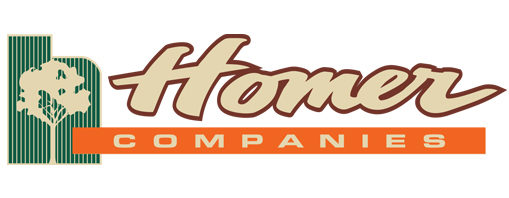Healthy trees are an essential part of any landscape, but even the strongest trees can fall victim to insects. In Illinois, a variety of tree pests can cause significant damage if not identified and addressed quickly. Early pest detection in trees is key to preserving their health and preventing the spread of infestation to nearby plants. In this guide, we’ll explore how to recognize the signs of insect tree damage and what to do if you suspect your trees are under attack.
Why Early Detection Matters
Early pest detection in trees allows for more effective, less invasive treatment options. When insect activity is caught early, trees are less likely to suffer long-term damage, and control measures are more likely to be successful. Waiting too long can lead to costly tree removal or widespread infestation throughout your yard or neighborhood.
Common Tree Pests in Illinois
Some of the most common tree pests in Illinois include:
- Emerald Ash Borer: This invasive beetle attacks ash trees, often leading to rapid decline and death. D-shaped exit holes and canopy thinning are telltale signs.
- Japanese Beetles: These pests skeletonize leaves, leaving behind a lacy appearance. They are especially problematic in mid to late summer.
- Spongy Moth (formerly Gypsy Moth): Larvae feed on leaves of oak, birch, and other hardwoods, causing defoliation and weakening trees.
- Aphids and Scale Insects: These small pests feed on sap and excrete honeydew, which can attract mold and ants.
- Bagworms: Found on evergreens, bagworms construct silken bags filled with plant debris and feed on needles and foliage.
Signs of Insect Tree Damage
Spotting insect tree damage early involves looking for subtle changes in a tree’s appearance and structure. Here are some warning signs:
1. Chewed or Skeletonized Leaves
Insects such as caterpillars and beetles feed on leaves, often leaving ragged edges or a lace-like pattern. This type of damage is typically most noticeable in midsummer.
2. Unusual Leaf Discoloration or Drop
Pests like aphids, mites, and scale can cause yellowing, curling, or premature leaf drop as they feed on sap and interrupt nutrient flow.
3. Sticky Residue or Black Sooty Mold
Aphids and scale insects excrete a sugary substance known as honeydew, which can coat leaves and branches. This sticky residue can encourage the growth of black sooty mold.
4. Holes in Bark or Wood
Borers such as the emerald ash borer create small exit holes in tree bark. These holes are often D-shaped and are a clear sign of internal feeding.
5. Webbing or Silk Bags
Webworms and bagworms create visible silk structures in tree branches. If you see webbing or hanging silk bags, it’s time to take action.
6. Frass or Sawdust
The presence of frass (insect droppings) or sawdust at the base of the tree can indicate boring insects working inside the trunk or branches.
What to Do if You Notice Tree Insect Damage
If you see any of these signs, don’t panic—but don’t delay either. Contacting a professional arborist for an evaluation is the best way to protect your landscape. At Homer Tree Care, our certified arborists are trained in identifying and treating insect tree damage. We offer comprehensive tree pest control services that are tailored to the specific pests affecting your trees.
Using the latest techniques in tree pest control, we can implement solutions that range from preventative treatments to targeted insecticide applications and long-term health monitoring. Our team understands the unique challenges posed by tree pests in Illinois, and we’re equipped to handle them effectively and responsibly.
Schedule a Consultation Today
Keeping trees healthy starts with vigilance and professional support. If you suspect insect activity or want to safeguard your trees against common threats, Homer Tree Care is here to help. Our team offers expert assessments and proven solutions for managing insect tree damage and preserving the beauty and safety of your landscape.
Contact us today to schedule a free consultation and take the first step toward protecting your trees with our trusted tree pest control services.

